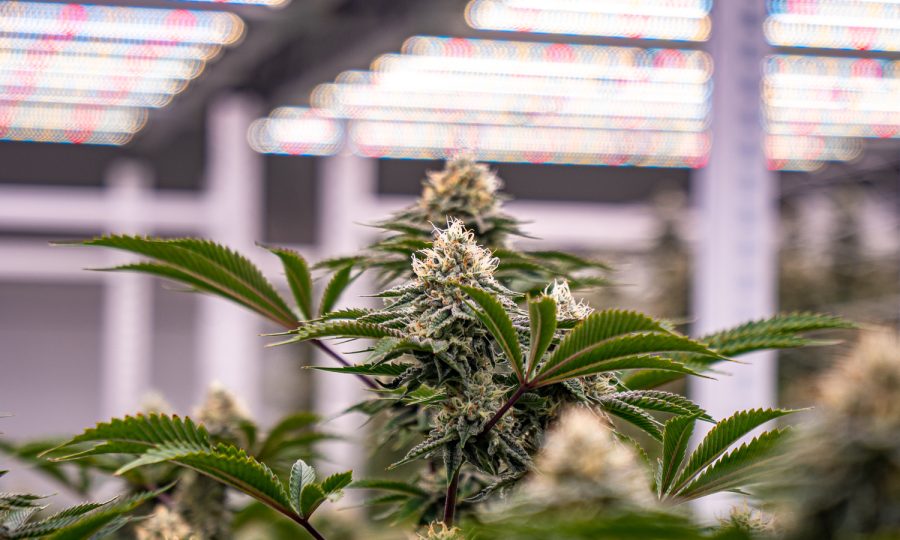Weed to Know: Does the strain, type of cannabis mean anything?
Collegian | Tri Duong
Cannabis growth of Wedding Cake, an indica strain at the Organic Alternatives growth facility Feb. 3.
March 29, 2023
Editor’s Note: Read the Spanish version of this article here.
One of the first things to come up when delving into the world of cannabis is the type or strain of any given product. Knowing whether cannabis is sativa, indica or hybrid, alongside the name of the strain, is said to inform consumers about the product and its associated experience.
However, as the weed industry grows, it’s become clear that this classification system is too simplistic and does not offer an accurate or full assessment of the effects of any cannabis strain.
Overall, there are three types of cannabis — sativa, indica and hybrid — that are historically categorized this way because of the differences in the appearance of each plant.
Sativa grows taller and has skinnier, longer leaves whereas indica grows short with stocky bush-type leaves, and a hybrid is a mix. Other distinctions between these three types come from popular culture, which ascribes different effects to different types.
Sativa has long been considered the more active and energizing of the two, and indica is known for its sedative effect. At this rate, one can assume the effects of the hybrid should be somewhere in between, but all three of these categorical groups have been misrepresented big-time. This means that if you’re picking a strain because it’s sativa or for its name, you might not be able to reliably predict its effects.
In a study published in “Journal of Cannabis Research,” various strains were genetically analyzed to test the distinctions and chemical makeup of each one. The study found that while the strains had small differences in their genetic groups, they did not correspond individually to being sativa, indica or hybrid types.
Despite the broad acceptance of these types as being somewhat defined and consistent, there is very little data to support their respective effects or chemical makeup, which is mainly due to the Schedule 1 drug classification of cannabis.
Laws across the country continue to turn in favor of cannabis, but the decades of criminalization frequently prevent cannabis types and strains from being analyzed using scientific methodologies.
Similarly, cannabis strains are said to have some cohesiveness in terms of how a particular strain may make you feel. Strains of cannabis are named based on their phenotype and ancestry, meaning that if one strain is crossbred with another strain, the name of the new strain will be a combination of its two parent plants. It’s also possible to clone one particular plant strain, in which case the name remains the same as before.
For plant breeders, this decision is multifaceted, but the choice to clone a strain or crossbreed two strains is often informed by the desired effects of the strain by the consumer. The problem is that this method of production, distribution and marketing assumes a level of consistency that has yet to be proven.
In the study listed previously, researchers found that some strains had significantly different genetic compositions, which may in part be due to the mislabeling or mispackaging of a plant with a different phenotype. However, this study also found that in some strains, the genetic makeup was considered stable.
The science of strains is complicated by the fact that in recent years, the cannabis industry has grown rapidly, which means a massive increase in new strains. The popularization of hybrids and novel strains continues to blur whatever boundaries exist between sativa and indica, effectively diluting each genetic pool.
It has been proven that some strains can be grown separately in controlled environments to maintain their distinctive cannabinoid and terpenoid profile in a way that is highly reproducible.
This suggests that it may be possible to standardize the chemical content of cannabinoids and terpenoids within a given strain in a controlled environment. The fact remains that many strains are not grown in controlled environments. Therefore, they are liable to inconsistencies in chemical makeup and may have inconsistent effects.
Reach Miles Buchan at cannabis@collegian.com or on Twitter @buchanmiles.







